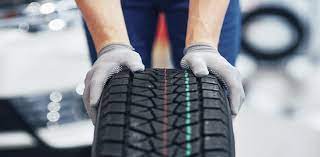
What is Tire Rolling Resistance
Every car owner will confidently tell you that not only the
car's handling, but also fuel consumption, grip on the asphalt and driving
dynamics depend very much on the quality of car tires. In addition, we are sure
that you have definitely heard about the term "tire rolling
resistance" and have probably wondered what it means and how it affects
the general properties of tires. In this article, we'll take a look at what
rolling resistance is and how low rolling resistance tires can improve the fuel
efficiency of your vehicle. So let's get started! See more at low rolling resistance tires
What is tire rolling resistance?
Let's take a look at what rolling resistance is. When you step on the gas pedal in your car, you start to accelerate. But if you look in more detail at the very process of accelerating the car, you can see that by pressing the gas pedal you transfer energy from the combustion of fuel in the engine, or electrical energy (it all depends on what type of engine you use) through other systems directly to the tires your car. This causes your tires to start to roll around and gain enough momentum to get your car moving. But in order for the wheel to start moving, your tires have to overcome many factors that prevent it from starting to move. And one of those factors is the rolling resistance of the tire.
Technically speaking, the rolling resistance of a tire is the minimum energy that your vehicle must transfer to the wheels in order to maintain a constant speed on a level road surface. In other words, this is the effort required to keep the wheel moving continuously.
The main source of rolling resistance is a process called hysteresis. Technically speaking, hysteresis is essentially the loss of energy that occurs when a tire travels across the road surface. Due to the fact that the car's engine must constantly compensate for hysteresis, it must generate additional energy, which leads to an increase in fuel consumption.
How tire design affects rolling resistance
We have already figured out what rolling resistance is. But what does rolling resistance directly depend on? As strange as it may sound, the rolling of a tire directly depends on the design of the tire and its properties. Let's take a closer look at all the key aspects.
The structure itself and the materials from which it is installed directly affect the rolling of the tire. In addition, sometimes the rolling resistance index of two visually identical tires can differ by almost two times. In addition to the design, the rolling properties of the tire are strongly influenced by the speed index. A high speed index means that the tire has high directional stability, and the tire itself is specially reinforced to withstand heavy loads. While these tires provide greater safety at high speeds, they sacrifice increased drag power. The dimension of the wheel is also an important parameter. Everything is simple here: the larger the wheel diameter, the lower the rolling resistance will be. It is known that plus one centimeter to the wheel diameter is minus 1% of the total rolling resistance.
If you want the power from your engine to be used to give your car the right acceleration, then you need to choose the right wheel protector. Remember that the deeper the tread on the tire, the greater the amount of resistance. Therefore, when the tires are already pretty worn out, rolling resistance can drop by as much as 30% of the original value.
Also, always pay attention to the tire pressure. Remember that a flat tire does not adhere properly to the road and distributes pressure unevenly. As a result, the car's grip on the road is severely impaired and handling drops. In addition, when driving on poorly inflated tires, the tires themselves quickly heat up and deform. At the same time, rolling resistance increases, fuel consumption increases and the tires themselves wear out faster.
